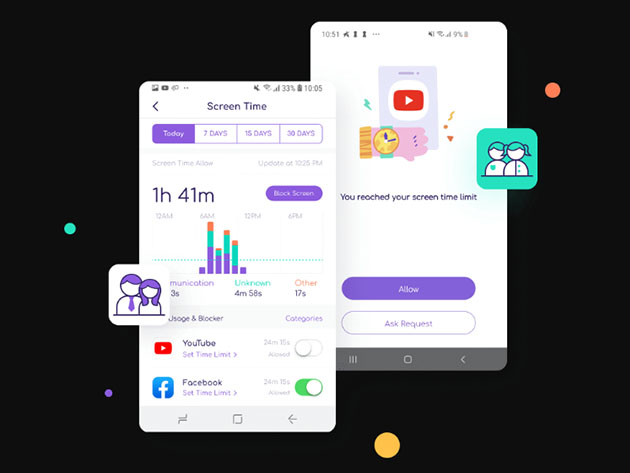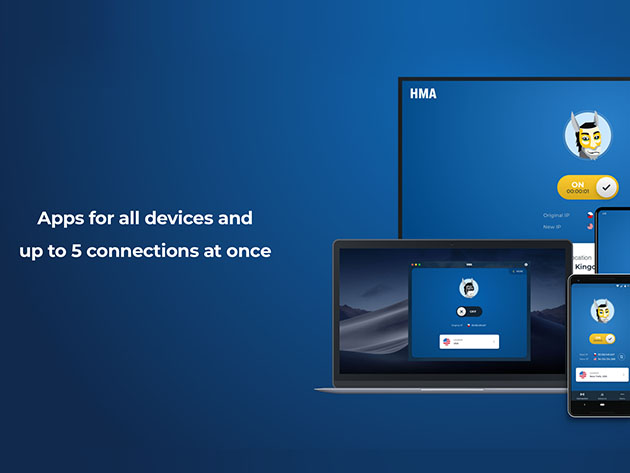The Android smartphone ecosystem is full of household names like Samsung, LG, Motorola, and Google. Wear OS smartwatches, however, don’t have the same brand recognition. Sure, there are well-known brands like Fossil pumping out smartwatches, but the heavy hitters in tech are mostly absent (or in the case of Samsung, doing their own thing). Mobvoi is one company making Wear OS devices that isn’t a watch brand, and they’ve been doing it for quite a while.
The company’s latest Wear OS watch is the TicWatch C2+. It’s a follow-up to the original TicWatch C2, which was released over 2 years ago. Mobvoi has been known to push out new watches with minimal updates and the TicWatch C2+ certainly fits in that mold. The number of changes compared to the 2+-year-old model can be counted on one hand. In fact, you only need one finger. Is that enough to make a compelling Wear OS watch in 2020? Let’s find out.
| TicWatch C2+ | |
| Dimensions (mm) | 42.8 x 42.8 x 12.7 |
| Colors | Onyx, Platinum, Rose Gold |
| Watch Case | Stainless steel (front) |
| Watch Strap | Genuine leather (interchangeable), 20mm and additional black silicone band |
| RAM | 1GB |
| Operating System | Wear OS by Google |
| Compatibility | Android , iPhone , iPhone |
| Platform | Qualcomm® Snapdragon Wear 2100 2100 |
| Display | 1.3″ AMOLED (360 x 360 px) |
| Connectivity | Bluetooth v4.1, WiFi 802.11 b/g/n |
| GPS | GPS + GLONASS + Beidou |
| Sensors | Accelerometer, Gyroscope, Heart-rate sensor |
| NFC payments | Yes (Google Pay) |
| Battery capacity | 400mAh (1-1.5 days) |
| Waterproof rating | IP68 |
Is this actually a new watch?


As mentioned, Mobvoi likes to re-release old watches with slightly updated internals. We saw this with the TicWatch Pro 2020, which had an identical design to the original TicWatch Pro. And I do mean identical; it had the exact same dimensions. Mobvoi has done the same thing with the TicWatch C2+ and I want to talk a little bit about this approach.
On the one hand, it’s not unusual for a smartwatch maker to keep the same design within a series. Samsung is doing it with the Galaxy Watch Active series, the Skagen Falster 2 and 3 look the same, etc. But they only look the same at a glance. In reality, the Watch Active 2 has a bigger display than the original. The same can be said for the Falster 3. Mobvoi, on the other hand, isn’t changing the physical design at all.
See, what those other manufacturers are doing is pretty common. They created a design language and subsequent devices fall in line with it. However, the new devices are truly new devices with different weights, dimensions, components, and features. The TicWatch C2+ is not simply designed to look similar to the TicWatch C2. It is the TicWatch C2.
To be fair, Mobvoi is not implying that these devices are completely new or even successors to the originals. They aren’t calling it the TicWatch C3. Still, it does feel a little low effort to keep launching “new” watches that are essentially recycled old watches. I’d love to see Mobvoi bring a brand new smartwatch to the table.
TicWatch C2+ Design


With that out of the way, let’s talk about the design itself. The TicWatch C2+ is Mobvoi’s best-designed watch in my opinion. The design is clean and simple, which is what I prefer. I understand that not everyone shares my design preferences, but the TicWatch C2+ is a breath of fresh air compared to the bulky, industrial TicWatch Pro.
The watch case is made of stainless steel and the underside is plastic. The bezel around the display is chamfered and slightly raised to protect the glass. The straight metal sides meet up with the plastic bottom and curve underneath. The curved underside makes the watch feel like it’s sitting high on top of your wrist. The two buttons on the side stick out quite a bit, but they don’t get in the way. They also have very nice travel and a satisfying click.


Mobvoi has three colors available for the TicWatch C2+: Black (pictured in this review), Silver, and Rose Gold. The black and silver models are identical, but the rose gold model takes a narrower band (18mm vs 20mm). The buttons on the rose gold model are also slightly different. They are rounded over, whereas the other models are flat. One last design note is the included watch bands. Mobvoi gives users a color-matching leather band and an extra silicone band. I really appreciate having both options.
As I’ve said in previous smartwatch reviews, design is very subjective. Personally, this is the type of watch design I gravitate toward. You may not like it and that’s okay.
Hardware & Performance
If you’re still reading you must be a fan of this design too, so let’s talk a little bit about the knitty gritty hardware details. It starts upfront with the 1.3-inch AMOLED display. It’s a perfectly fine display with deep blacks and vibrant colors, but there’s one pretty significant downside. The TicWatch C2+ does not have an ambient light sensor for auto-brightness.
It took me a while to realize this as I initially thought the display just had really poor outdoor visibility. Eventually, I realized the display wasn’t adjusting automatically, which is something I’ve come to rely on from other smartwatches. What this means is you’ll likely find a decent intermediate brightness and stick with that most of the time. I don’t find it feasible to manually change the brightness for every situation I’m in. Battery life suffers because you’ll want a relatively bright setting to be useful in most situations.
I previously mentioned that there was only one difference between the original TicWatch C2 and the C2+. It’s RAM. The C2+ has 1GB of RAM, whereas the original had 512MB. As we’ve found in other Wear OS devices, this makes a pretty big difference in performance. The C2+ has the same Qualcomm Snapdragon Wear 2100 as the original, which is disappointing. The Wear 3100 has been out for quite some time and Mobvoi has still not used it in any smartwatches. It’s not as big of an upgrade as you might expect, but it is still strange that Mobvoi hasn’t adopted it yet. The extra RAM, however, is a big upgrade. Performance has been just as good as any other Wear OS device I’ve used. Which is to say it’s good enough.
TicWatch C2+ Battery Life
The TicWatch C2+ has a 400mAh battery and the battery life has been pretty standard. I can get through a single day easily, but trying to stretch it to two days is tough. It can be done if you’re not doing any serious fitness tracking. I know we pretty much all charge our phones overnight already, but there’s just something about charging a watch every day that I don’t like. Samsung Galaxy watches seem to get much better battery life than Wear OS devices.
It can be hard to talk about performance and battery life in Wear OS devices because they all generally feel the same. The difference between the Wear 2100 and Wear 3100 isn’t drastic, and many watches have 1GB of RAM now. This is why people say Wear OS is a stagnant platform. Thankfully, a new Snapdragon Wear chip is on the horizon.
What I can say about performance on the TicWatch C2+ is it’s fine. I haven’t noticed any considerable lag or stuttering. Even during the initial setup process, which is where Wear OS devices can really struggle, I didn’t have any major issues. Is it the best performing smartwatch on the market? No. Is it good enough to compete with other Wear OS devices? Yes.
Software & Fitness
Fitness tracking is a big part of what smartwatches can do and the TicWatch C2+ has plenty to offer in this department. Beyond the standard Google Fit apps, Mobvoi has included its own suite of fitness apps. This suite consists of TicExcercise, TicPulse, and TicMotion. The first two are not much different from Google’s own included fitness apps and feel a bit unnecessary. TicMotion, on the other hand, is an AI-powered app that is supposed to automatically track workouts. Sadly, it still doesn’t work great.
The fact of the matter is Wear OS just isn’t that great of a fitness platform. If you want to leave your phone at home, there’s very little a Wi-Fi-only Wear OS device can do on its own. That may sound obvious, but it’s not the case on other platforms. For example, with my Samsung watch, I can listen to offline Spotify playlists and start a workout in MapMyRun without my phone. The Wear OS Spotify app has zero offline capabilities and the Wear OS MapMyRun app can’t start anything without your phone. It’s very frustrating and makes Wear OS feel extremely unfinished compared to other operating systems.
As someone who has used both Samsung watches and Wear OS watches, the only real draw to Wear OS I can see is Google stuff. It is nice to have quick access to Google Assistant on your wrist. Bixby can do basic stuff, but it’s not that useful. All the other major Google apps have serviceable replacements on Tizen OS. Is it worth using Wear OS just for Google Assistant? Not in my opinion.
Conclusion
The TicWatch C2+ is the third Wear OS device I’ve used in the last year and my conclusions for all three have basically been the same: good hardware, meh software. If I was reviewing a smartphone, I would simply recommend buying a device from a different manufacturer to get better software. With Wear OS, though, the software is basically the same on every smartwatch. Once you make the decision to go with Wear OS it becomes exclusively about the hardware.
That’s where the TicWatch C2+ suffers. For a price of $209.99, I think you can find better specifications at a lower or comparable price. For example, the Moto 360 has the newer Snapdragon Wear 3100 processor, an ambient light sensor, 1GB of RAM, and it’s down to $199. That’s not to say the TicWatch C2+ is a terrible deal. Indeed, many Wear OS devices are priced near $300. It all depends on what is important to you.
I really like the TicWatch C2+’s minimal and stylish design, but it’s ultimately not enough to win me over. Wear OS’ familiar pitfalls and a few little hardware absences make the whole package hard to recommend. In 2018 the TicWatch C2 was a great choice from Wear OS fans, but an update in RAM isn’t enough to carry that over to 2020.
Buy the TicWatch C2+ from Mobvoi
The post TicWatch C2+ Review: New in Name, Old in Spirit appeared first on xda-developers.
from xda-developers https://ift.tt/3hotpQF
via IFTTT



















